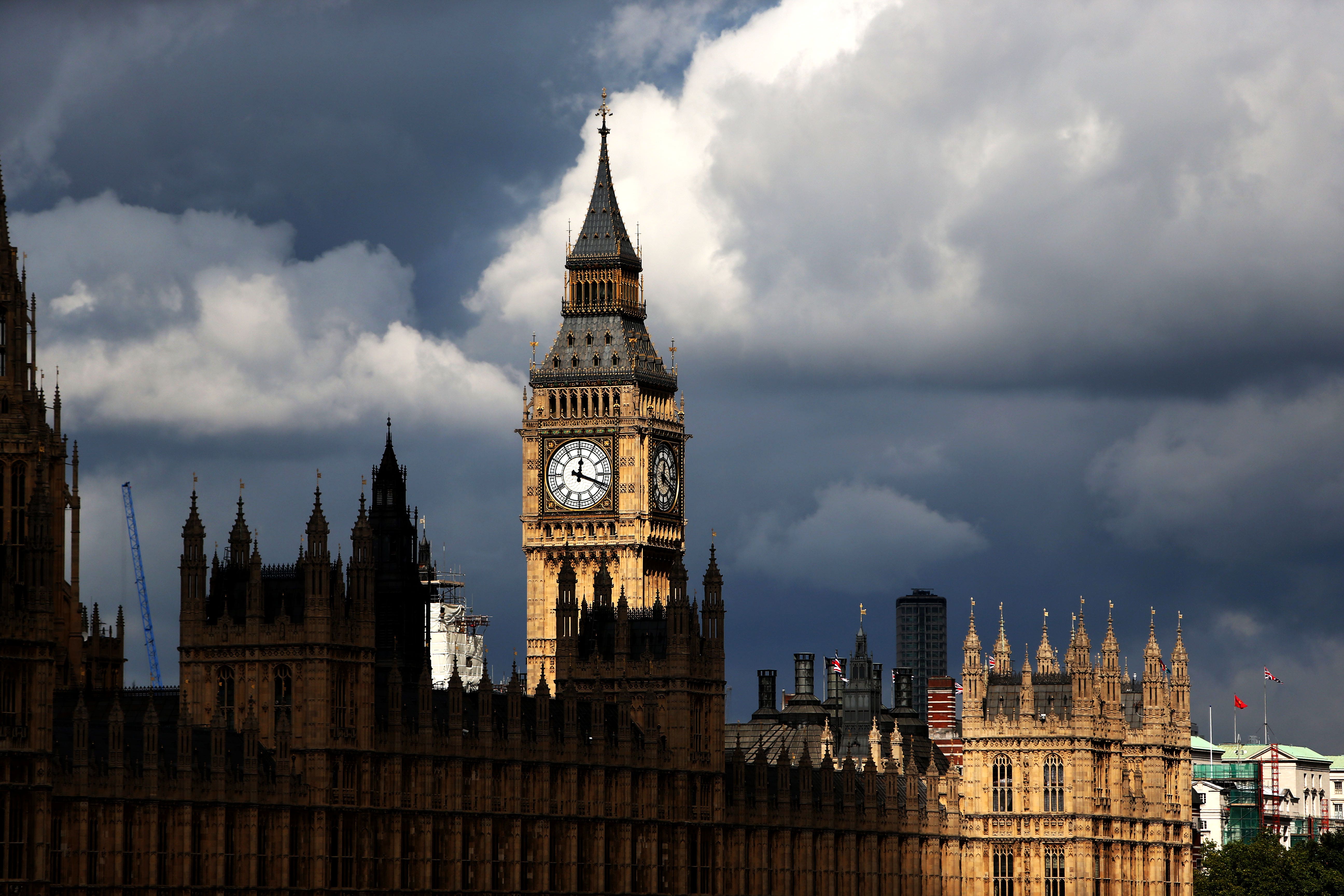Four scenarios for the outcome of the General Election
The Tories can afford to lose up to 46 seats before their notional 2019 majority would be wiped out.

Your support helps us to tell the story
From reproductive rights to climate change to Big Tech, The Independent is on the ground when the story is developing. Whether it's investigating the financials of Elon Musk's pro-Trump PAC or producing our latest documentary, 'The A Word', which shines a light on the American women fighting for reproductive rights, we know how important it is to parse out the facts from the messaging.
At such a critical moment in US history, we need reporters on the ground. Your donation allows us to keep sending journalists to speak to both sides of the story.
The Independent is trusted by Americans across the entire political spectrum. And unlike many other quality news outlets, we choose not to lock Americans out of our reporting and analysis with paywalls. We believe quality journalism should be available to everyone, paid for by those who can afford it.
Your support makes all the difference.A July election is earlier than many in Westminster had expected, with a contest in October or November widely thought to have been more likely.
Mr Sunak’s announcement came after the Office for National Statistics said Consumer Prices Index (CPI) inflation slowed to 2.3% in April, down from 3.2% in March.
He said that was a “major milestone” for the country, with inflation now “back to normal” levels.
One reason for delaying might have been to allow Chancellor Jeremy Hunt to deliver another tax-cutting financial statement in the lead-up to the vote, but official figures revealed borrowing for April overshot forecasts, hitting £20.5 billion, suggesting he would have had limited scope for pre-election giveaways.
Here are four possible outcomes for the General Election, from the Conservatives losing seats but remaining the largest party, to Labour making enough gains to form its first government in 14 years.

Each scenario includes examples of the size of swing and turnover of seats that could take place.
Conservatives lose majority but remain largest party
The General Election is being held using new constituency boundaries, which means it will not be possible to compare the results directly with what happened at the last general election in 2019.
In order to judge how well the parties do at the election, and to work out which seats they need to win to form a government, a set of notional results for the 2019 election has been calculated to show what would have happened if that contest had taken place using the new boundaries.
These notional results have been compiled by professors Colin Rallings and Michael Thrasher of the University of Plymouth, on behalf of BBC News, ITV News, Sky News and the PA news agency, and will be used as the basis for reporting the gains and losses at the General Election.
Under these notional results, the Conservatives won 372 seats at the 2019 election.
A total of 326 seats are needed for a majority in the House of Commons, therefore the Tories can afford to lose up to 46 seats before dropping below this threshold.
A uniform nationwide swing in the share of the vote at the election from Conservative to Labour of 4.2 percentage points would likely be enough to wipe out the Tory majority, as it would involve 47 Conservatives losses – 40 to Labour, five to the Liberal Democrats and two to the SNP – and reduce them to 325 seats.
This scenario has been calculated on the basis of the Conservative vote share falling by 4.2 percentage points in every seat in Britain, Labour’s share rising by the same amount, while no other parties’ share has changed.
Seats that Labour would gain from the Tories on a swing of 4.2 points start with Burnley in Lancashire, the party’s number one target, which needs a swing of just 0.13 points to change hands (0.2 when written to one decimal place, as 0.1 would not be enough).

They also include Chingford & Woodford Green in London, Stoke-on-Trent Central in the West Midlands, Hastings & Rye in East Sussex and Truro & Falmouth in Cornwall.
The 47th Conservative loss by size of swing – the one that would represent the point at which the Tories lose their majority, though they would still be the largest party in the Commons – is Wrexham in north Wales, which Labour would gain on a swing of 4.2 (4.18) points.
Labour is largest party in a hung parliament
Under this scenario, no party has a majority of seats in the House of Commons, but Labour manages to win more constituencies than the Conservatives, making it the largest party in what is known as a hung parliament.
A uniform swing in the share of the vote from Conservative to Labour of 8.3 percentage points would likely be enough to produce this outcome.
A swing of this nature would see the Conservatives lose 92 seats, reducing their total from 372 to 280.

At the same time, Labour would gain 81 seats – 79 seats from the Tories, plus two from the SNP – meaning its total would rise from its notional 2019 result of 201 seats to 282.
This figure for Labour includes the Speaker’s seat of Chorley.
With no party reaching 326 seats needed for an overall majority in the Commons, the next step might be for two or more parties to begin negotiations to form a coalition government, or for one party to attempt to form a minority government, or even for another general election to take place.
Overall, 94 seats would change hands under this scenario, which is based on a 8.3-point swing from Conservative to Labour with no other parties’ vote share changing.
This would also lead to the Liberal Democrats gaining nine seats from the Conservatives, while the SNP would make four gains from the Tories but lose two seats to Labour.
Seats that Labour would gain from the Tories on a swing of 8.3 points include Darlington in County Durham, Bolsover in Derbyshire, Shrewsbury in Shropshire and Uxbridge & South Ruislip in London, the seat of the former prime minister Boris Johnson.
The 81st Labour gain by size of swing – the one that would represent the point at which Labour would become the largest party in a hung parliament – is Chelsea & Fulham in London, which the party would gain from the Conservatives on a swing of 8.3 (8.21) points.
Labour wins overall majority
In this scenario, Labour does just enough to reach 326 seats – the number needed for an overall majority in the House of Commons.
A uniform swing in the share of the vote from Conservative to Labour of 12.7 percentage points would likely be enough to produce this outcome – a swing greater than the one achieved by Labour under Tony Blair at the 1997 general election.
A swing of this size would see the Conservatives lose 135 seats, reducing their total from 372 to 237.
At the same time, Labour would gain 125 seats, including 117 seats from the Tories, meaning its total would rise from its notional 2019 result of 201 seats to the magic number of 326.
Overall, 143 seats would change hands under this scenario, which is based just on a 12.7-point swing from Conservative to Labour with no other parties’ vote share changing.
This would also see the Liberal Democrats gaining 12 seats from the Conservatives, while the SNP would make six gains from the Tories but lose seven seats to Labour, and Labour would pick up one seat from Plaid Cymru.
Seats that Labour would gain from the Tories on a swing of 12.7 points include Bournemouth East in Dorset, Scunthorpe in Lincolnshire, Colchester in Essex and Dover & Deal in Kent.
The 125th Labour gain by size of swing – the one that would represent the point at which Labour had an overall majority in the Commons – is Buckingham & Bletchley in Buckinghamshire, which the party would gain from the Conservatives on a swing of 12.7 (12.69) points.
Labour wins working majority
This scenario sees an even bigger swing to Labour, one that is large enough to give the party a working majority of 30 seats in the next House of Commons.
A uniform swing in the share of the vote from Conservative to Labour of 13.8 percentage points would likely be enough to produce this outcome.
A swing of this size would see the Conservatives lose 147 seats, reducing their total from 372 to 225.
Labour would gain 139 seats, including 129 seats from the Tories, meaning its total would rise from its notional 2019 result of 201 seats to 340.
Some 157 seats would change hands under this scenario, which is based solely on a 13.8-point swing from Conservative to Labour with no other parties seeing a change in their share of the vote.
This would also see the Liberal Democrats gaining 12 seats from the Conservatives, while the SNP would make six gains from the Tories but lose nine seats to Labour, and Labour would pick up one seat from Plaid Cymru.
Seats that Labour would gain from the Tories on a swing of 13.8 points include Morecambe & Lunesdale in Lancashire, Rugby in Warwickshire, Thurrock in Essex and Banbury in Oxfordshire.
The 139th Labour gain by size of swing – the one that would mark the point at which Labour reached an overall majority of 30 – is Plymouth Moor View in Devon, which the party would gain from the Conservatives on a swing of 13.8 (13.78) points.